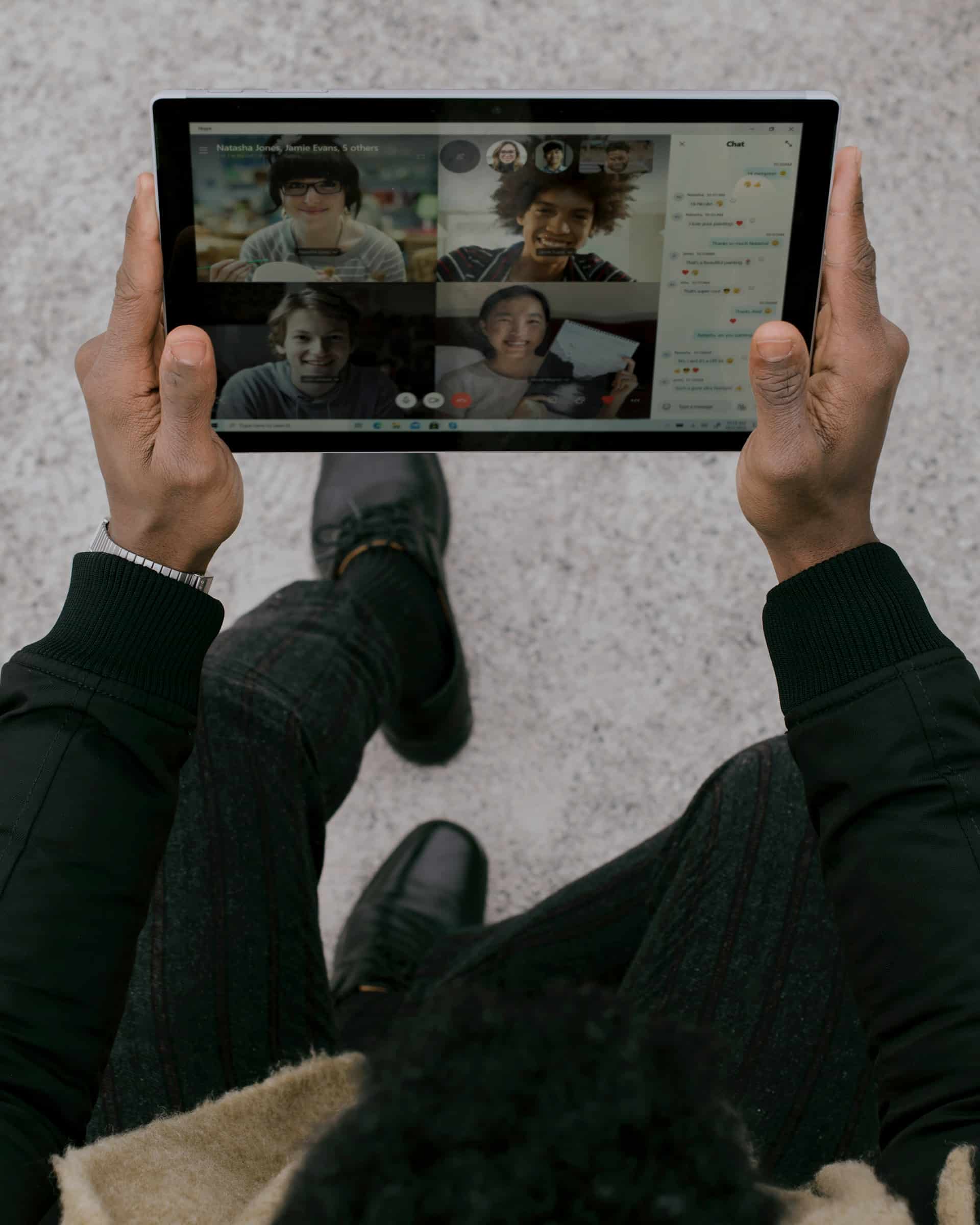Ever found yourself zoning out during a video call, only to snap back and realize you’ve been asked a question? We’ve all been there, grappling with the nuances of remote work. But let’s not dwell on the past too much.
The digital workspace is evolving, morphing into something far more engaging and efficient than the video calls that have become our bread and butter. So, how exactly is this transformation unfolding?
The shift goes beyond mere aesthetics; it’s about rethinking our digital interactions to foster creativity, spontaneity, and genuine connections. As we dive deeper, we’ll explore how this evolution impacts not just our productivity, but also our well-being and sense of community in the workplace.
IMAGE: PEXELS
The Rise of Integrated Digital Collaboration Tools
Imagine starting your day not with a flurry of login screens, but with a single platform where your tasks, meetings, and documents live in harmony. Tools like Slack and Microsoft Teams have paved the way, integrating chats, video calls, and project management features.
But here’s the interesting part: these platforms are now incorporating sophisticated project tracking, file sharing, and even direct access to AI-powered assistants. This means less time juggling tabs and more time focusing on what matters. Remember when finding that one doc felt like searching for a needle in a haystack? Those days are becoming a distant memory.
Those days are becoming a distant memory. And it doesn’t stop there. These platforms are evolving into ecosystems that support a myriad of third-party apps and services, making them customizable to an organization’s or individual’s unique workflow. It’s like having a digital Swiss Army knife; whether you’re coding, designing, or planning, your tools are just a click away.
Virtual Office Spaces: A Game Changer
Now, let’s take a step back and picture your ideal office. Chances are, it’s not just a collection of desks and chairs. It’s about the vibe, the energy, the spontaneity of bumping into a colleague and sparking an unplanned brainstorming session.
Enter virtual office spaces like Gather and Sococo, which recreate these interactions in a digital environment. You can “walk” over to a colleague’s avatar for a quick chat or join a virtual meeting room that feels surprisingly like the real thing. It’s this blending of the virtual and the physical that’s breathing life into remote work, making it feel less isolated and more… human.
This virtual approach is breaking down the geographical barriers that once limited collaboration, enabling teams to foster a sense of belonging and culture that was hard to replicate in traditional remote settings. It’s like having an office without walls, where the possibilities for collaboration and innovation are boundless.
Productivity Software: The Unsung Heroes
While flashy new platforms often steal the spotlight, let’s not overlook the unsung heroes of the digital workspace: productivity software. Apps like Notion, Trello, and Asana have transformed how we organize our work, offering customizable templates and automation features that streamline project management.
And with the integration of AI, these tools are getting smarter, suggesting optimizations for your workflow and even automating repetitive tasks. Imagine your to-do list not just telling you what needs to be done, but also how to do it more efficiently. That’s the kind of sidekick we all need. Beyond mere task management, these platforms are evolving into comprehensive ecosystems that support your entire workflow.
From embedding real-time collaboration tools to integrating with your favorite communication apps, they’re designed to be the central hub of your workday. It’s about creating a seamless workflow that bridges the gap between ideation and execution, ensuring that your projects move forward smoothly and efficiently.
AI Enhancements: A Touch of Magic
Speaking of AI, it’s adding a touch of magic to the mundane. From grammar and tone suggestions in writing tools like Grammarly to AI-driven analytics in platforms like Google Analytics, AI is becoming an integral part of our work lives.
It’s like having a personal coach who’s always on, offering insights and suggestions to improve your work. And for those moments of writer’s block or creative drought? AI-powered brainstorming tools are here to spark your next big idea.
This magic extends into the realm of personalization and learning, tailoring experiences to your unique work style and helping you learn from your data in ways that were previously unimaginable. AI can analyze your writing to suggest more engaging content or optimize your schedule based on your most productive hours. It’s not just about working harder, but smarter, with technology that adapts to you.
The Human Element: More Important Than Ever
But with all these advancements, it’s crucial to remember the human element. Technology is a tool, but it’s the connections and collaborations between people that drive real innovation. Have you ever found a piece of technology that seemed to understand exactly what your team needed?
Chances are, it was designed with a deep understanding of human behavior and needs. And as we look to the future, the most successful digital workspaces will be those that enhance our human interactions, not replace them. This focus on the human element is what will truly differentiate the digital workspaces of tomorrow.
It’s about creating an environment where technology supports natural, intuitive interactions, fostering a culture of collaboration and empathy. The goal is to amplify our human capabilities, making it easier to communicate, create, and innovate together. As we navigate this digital evolution, the tools that prioritize human connection and understanding will lead the way.
A Balanced Future
Wrapping things up, let’s revisit our starting point. Remember those all-too-common moments of drifting away during a seemingly endless video call? The future of digital workspaces promises to leave such experiences in the rearview mirror, fostering environments where engagement and productivity coexist harmoniously. Yet, as we navigate these advancements, a pivotal question arises: how do we ensure that our technologies enrich us, rather than command us?
The evolution of digital workspaces isn’t merely about sidestepping the fatigue associated with video conferencing. It’s a quest to cultivate spaces that mirror the complexity and vibrancy of our daily tasks.
It’s about discovering that perfect harmony where technology amplifies our human connections, instead of overshadowing them. Looking ahead, our challenge is not just to question the capabilities of our digital environments but also to reflect on how they can draw us closer, bridging distances with a sense of togetherness.
So, what does the blueprint of your ideal digital workspace look like? How does it bolster your productivity while enriching your connections with colleagues? The dialogue extends beyond this conversation.
It’s an ongoing exploration of how we can sculpt digital realms that not only streamline our work but also nourish our human spirit. As we inch forward, let’s commit to fostering digital spaces that celebrate our shared humanity, ensuring that our journey towards innovation remains grounded in enhancing our collective well-being and connection.
IMAGE: UNSPLASH
If you are interested in even more technology-related articles and information from us here at Notilizer, then we have a lot to choose from.


COMMENTS